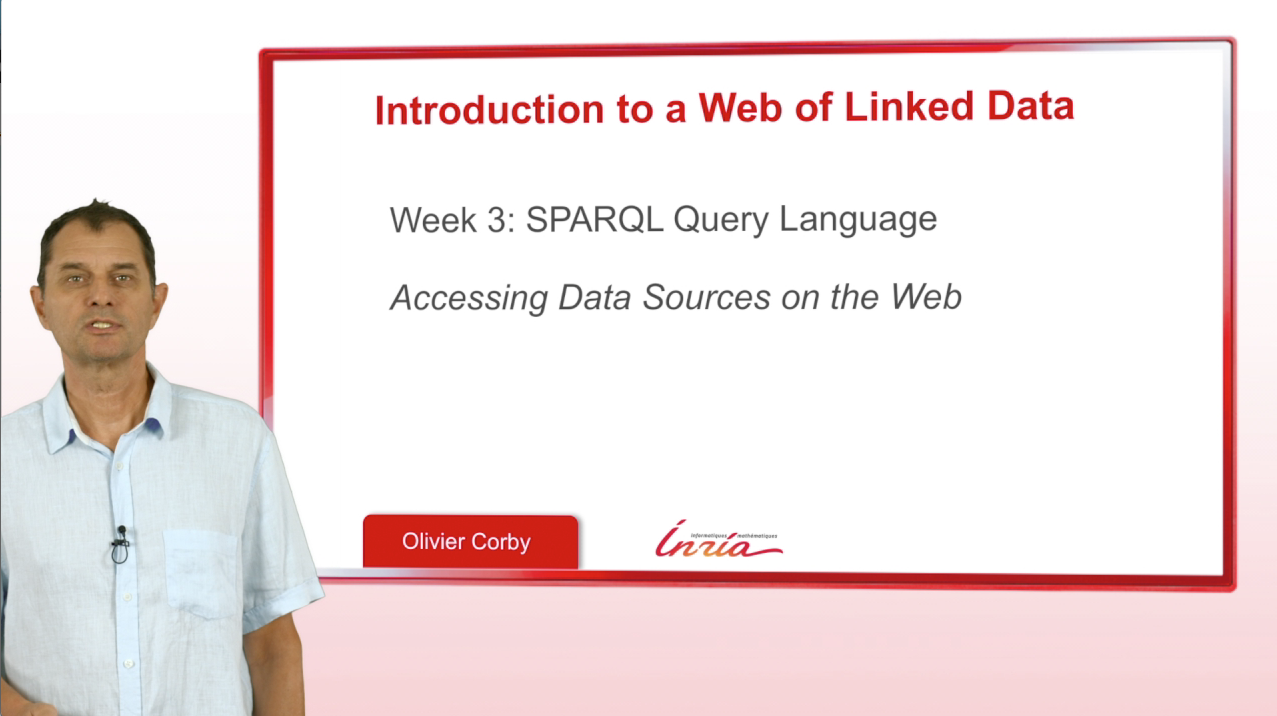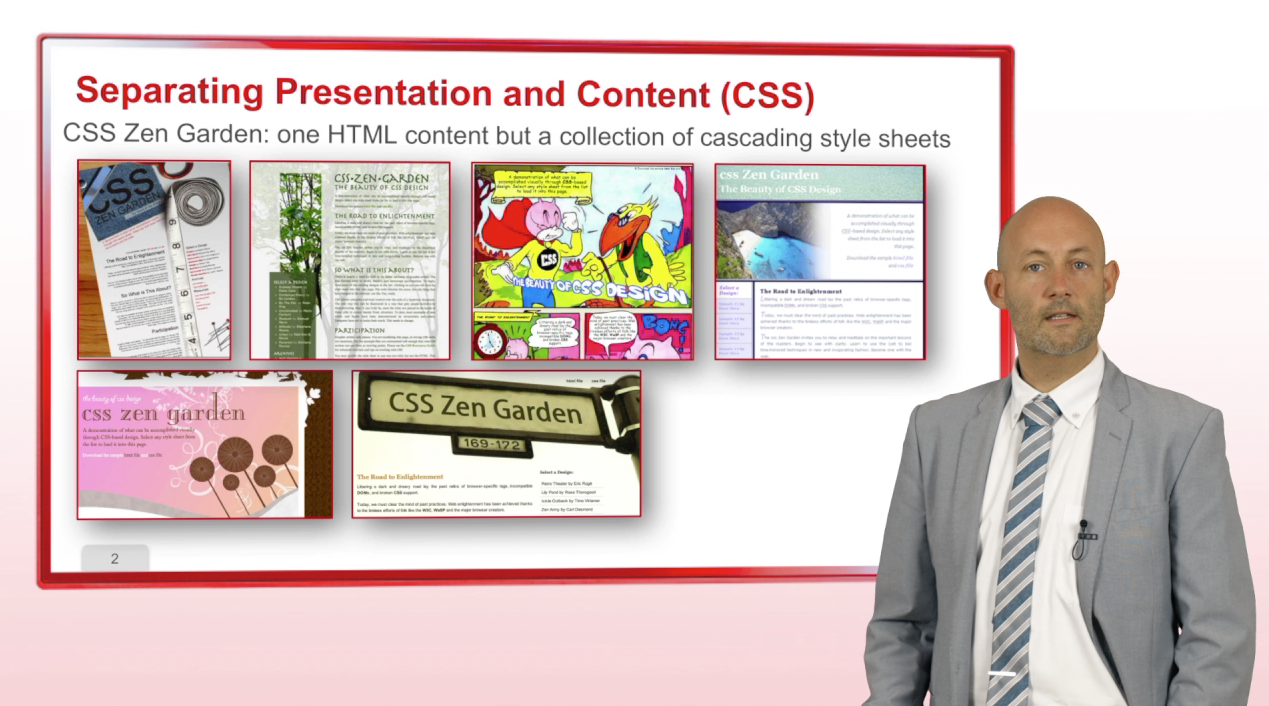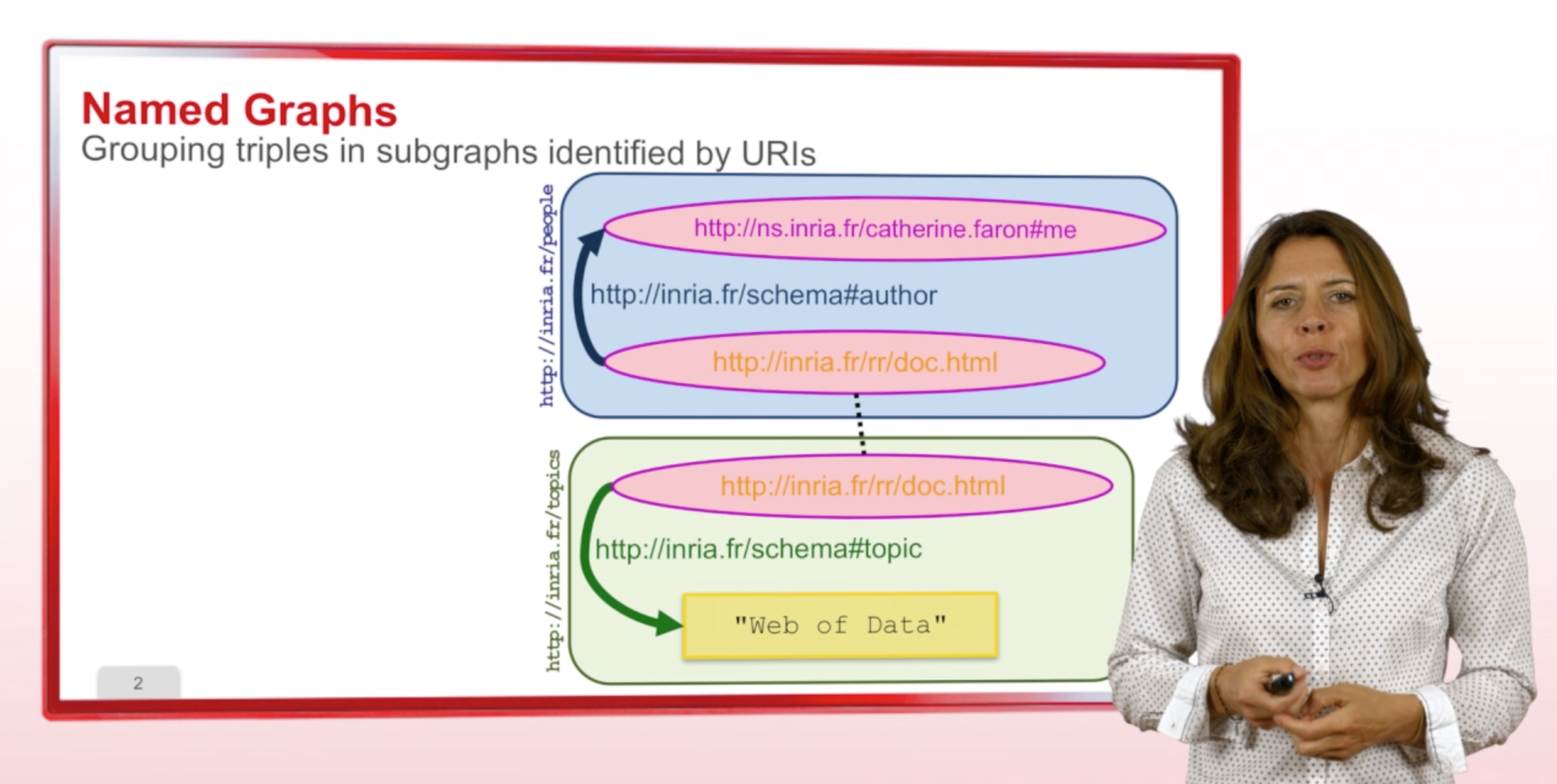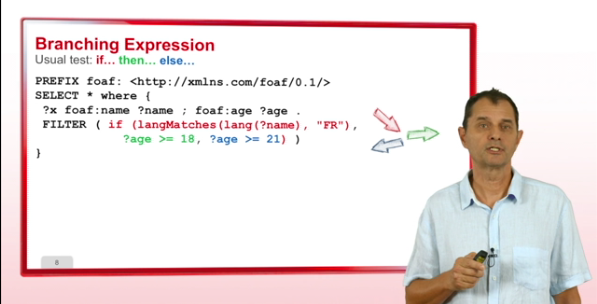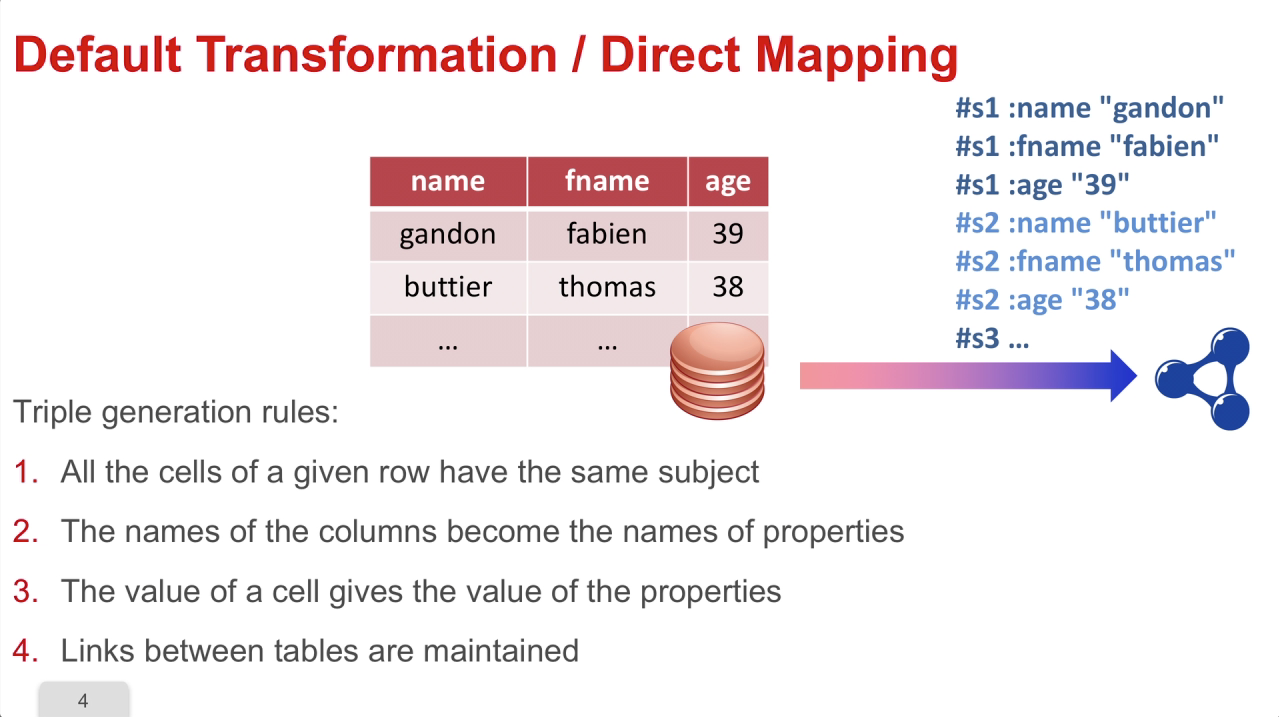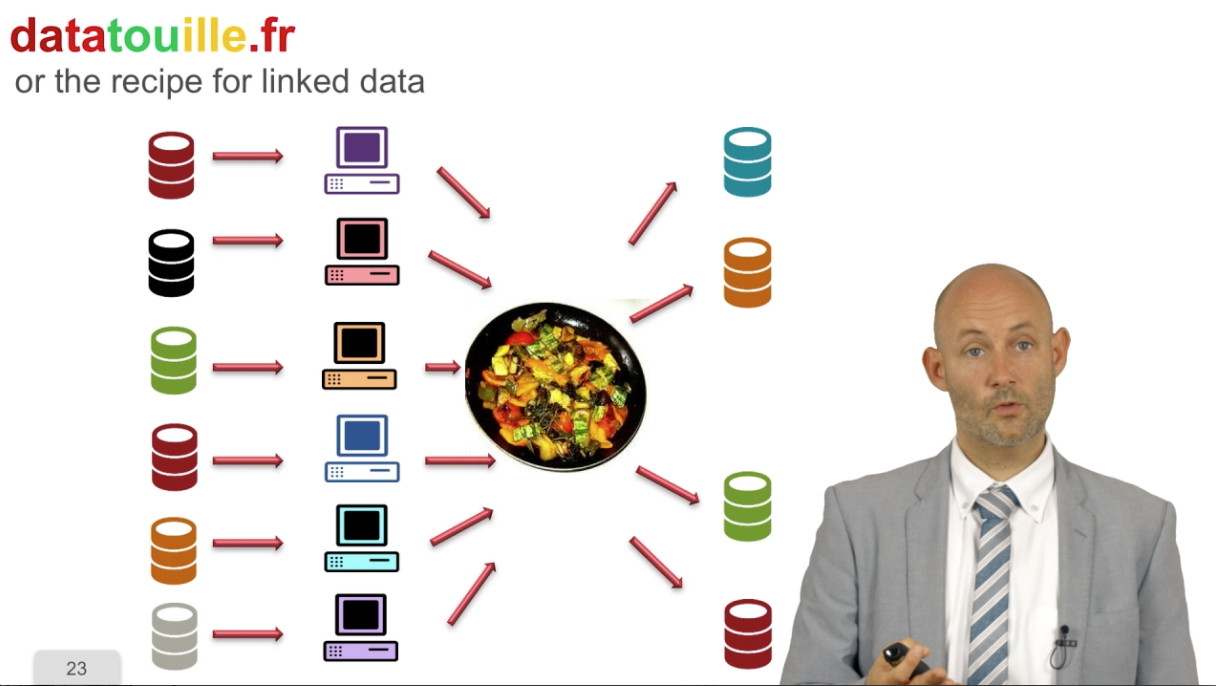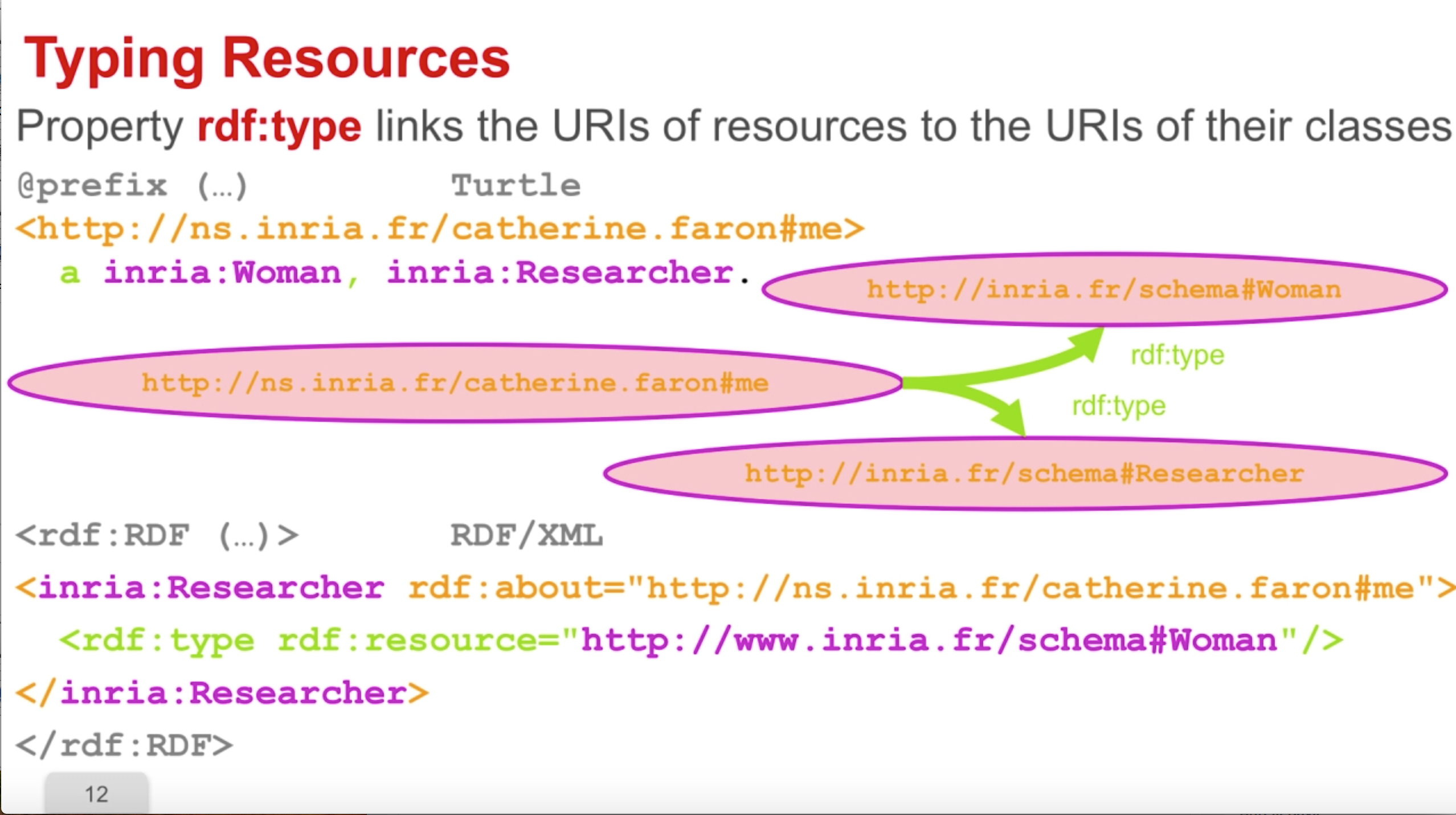
Gandon, Fabien (1975-....)
Titulaire d'un doctorat en sciences (Informatique, Nice, 2002)
Fabien GANDON est directeur de Recherche à Inria et responsable de l'équipe Wimmics (Inria, I3S, CNRS, UNS) qui étudie des modèles et algorithmes pour concilier le Web social et le Web sémantique. Il est aussi représentant d'Inria au consortium international de standardisation pour le Web (W3C).
Vidéos
3. Serialization Syntaxes
We saw in the previous sequence the principles of the RDF model by using an abstract syntax. This sequence will present you the
6. Results and Update
In the last part, we will see the result format and Update query. The format of SPARQL query results are also standardized by the
Demos about Integration with Other Data Formats and Sources
Augmenting Web browser with data in the pages This demonstration show an extension to the browser called Operator. This extension allows the browser to actually look at the data inside the page
1. RDF Graph Pattern Matching
This third part presents the SPARQL (pronounced sparkle) Query Language that enables users to query RDF triple stores. The SPARQL query language enables us to access data
2. Separating Presentation and Content
We now consider one of the first evolutions of the web, to separate the presentation and the content. In 1996, CSS, standing for
6.Naming graphs
This sequence explain how to name graphs in the RDF model and what is the utility of it. In many applications it is very useful to be
1. RDFa: an RDF syntax inside HTML
The idea of the integration of the web of linked data with other data formats and sources is determined by the fact that the Web is evolving towards all forms of
1. Describing resources
In this second part we will focus on RDF. RDF is the first brick of the Semantic Web Standards Stack and comprises both a model and several serialization syntaxes, to publish data about anything on
3.Filter, Constraint and Function
In the third part, we will see the filters, constraints and functions. It is possible to filter the results of query using
5. R2RML: integration with databases
R2RML allows us to integrate data from databases into RDF. There are two ways of transforming a relational database into RDF using R2RML.
4. Linked Data Principles
In this fourth part, we're going to see the principles behind Linked Data. What we're going to do is to change slightly how we
4. Values, Types and Languages
This sequence is about the specificities of the RDF model related to typing literal values and resources in an RDF graph and indicating the




